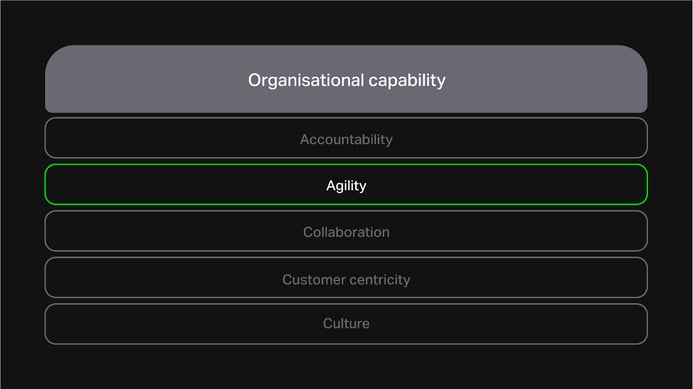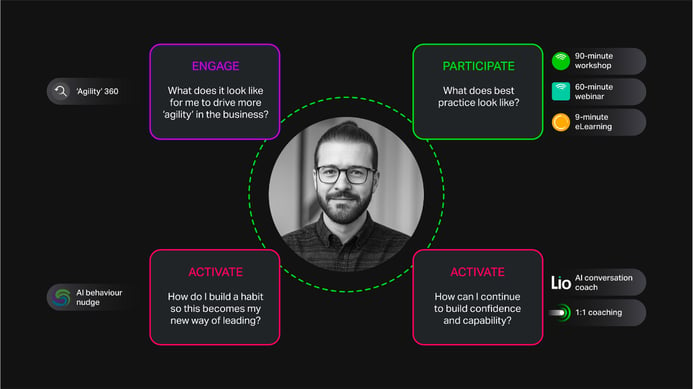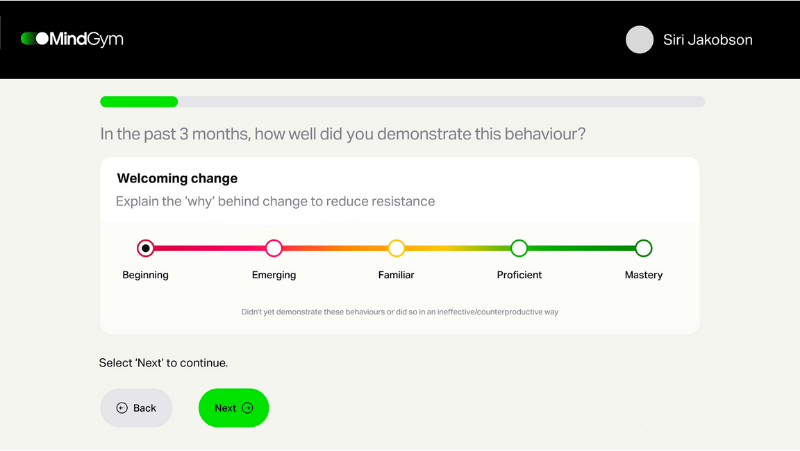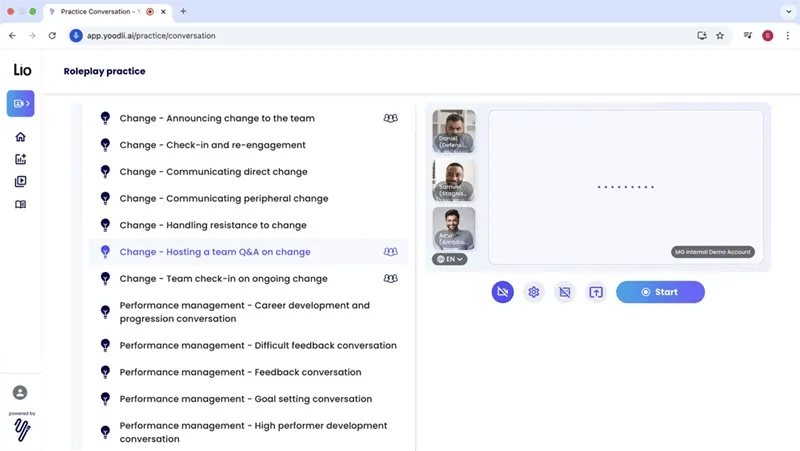Our performance improvement framework
The High-Performance Behaviour Model allows you to pinpoint the behaviours that drive business outcomes.


Every year, companies spend millions on strategies, technology and transformation projects.
Yet:
- 69% of change efforts stall
- 88% of initiatives miss their mark
- 42% of CEOs fear for their company’s survival
Not because the ideas are flawed. But because people don’t change what they do.
The High-Performance Behaviour Model solves this.
It identifies the precise behaviours that drive real business outcomes, embeds them across your organisation using our EPA approach, and ultimately closes the gap between strategy and success.
What is the High-Performance Behaviour Model?
Every competency model claims to improve performance. Few deliver.
The High-Performance Behaviour Model does.
It doesn’t drown teams in vague virtues like ‘excellence’ or ‘ownership’. It cuts through to the specific, observable behaviours that truly drive the organisational outcome you want.
It tells you:
- Exactly which behaviours shift the dial
- What those look like for your people at every level
- How to make them part of everyday work
- And how to prove they’re working
It’s built on decades of behavioural science and battle-tested in the real world.
Proof it works:
In an independent study (Saville, 2020), the High-Performance Behaviour Model outperformed SHL, Hogan, and the 16PF, making it the most accurate predictor of workplace performance.
How it works
Step 1

Start with capabilities
Start by selecting an organisational capability that underpins your strategy – such as agility or accountability. Choose from our 10 organisational capabilities or use our diagnostic to pinpoint where your business needs most development.
Step 2

Pinpoint key competencies
Step 3

Prioritise behaviours
We pinpoint 3 behaviours as the visible expression of how that key competency shows up day to day. These behaviours change for different levels of leadership to reflect the reality of real workplaces.
Step 4

Translate to action
We build these behaviours into our diagnostics, development sessions, coaching and more – so every leader knows what “good” looks like at their level and what to focus on to get there.
Why it works
Most development spreads effort thin. A little on everything. And it doesn’t stick.
We focus where it counts.
The High-Performance Behaviour Model shows that not all competencies are created equal, and it’s often as few as two or three critical competencies that drive between 60–70% of the performance of any organisational capability.
Take agility: what matters most is how people react to change, make tough decisions and seize new opportunities.
Once we know the competencies to focus on, we distil the behaviours that bring them to life and then align your development efforts – workshops, coaching, eLearning – to reinforce them everywhere.
It’s precision. With staying power.
The High-Performance Behaviour Model and our EPA framework.

Engage: Identify the specific gaps
Use our diagnostics including the Organisational Capability Diagnostic and 360 feedback tool to uncover what’s holding performance back.
Example: A CHRO identifies agility as a key organisational capability gap and directs investment to close it. Senior managers complete a tailored 360 to pinpoint the specific agility behaviours they need to strengthen.

Participate: Targeted development of the behaviours that matter
Forget one-size-fits-all. We map individual experiences to the behaviours that drive critical organisational capabilities.
Example: 360 insights reveal that senior managers struggle with welcoming change. They attend targeted workshops that directly build the behaviours needed to improve in this area.

Activate: Deliver sustained behaviour change through activation in the flow of work.
Tools like coaching and eLearning allow for continued reinforcement, accountability and support to drive sustained behaviour change. We measure the impact this has on leaders’ observed behaviours and overall organisational capability.
Example: Senior managers take part in coaching to embed new behaviours into their day-to-day work, extending impact beyond the workshops. They begin leading with greater agility, driving improvements in performance, innovation and responsiveness.
What makes the High-Performance Behaviour Model better than traditional models
High-Performance Behaviour Model |
Traditional models |
|---|---|
| ✅ Focuses on observable behaviours | ❌ Describe vague traits or competencies |
| ✅ Connects leadership behaviours to strategic business outcomes | ❌ Leadership development is isolated from business goals |
| ✅ Validated, data-backed and highly predictive | ❌ Often anecdotal or unvalidated |
| ✅ Role-specific and practical | ❌ Generic, one-size-fits-all |
| ✅ Built into everyday work | ❌ Theoretical, not applied |
| ✅ Combines personality + performance data | ❌ Looks at one or the other only |
| ✅ Embedded into a complete, always-on development ecosystem | ❌ Delivered in isolation as a one-off intervention |
What's in it for you
With the High-Performance Behaviour Model, you can:
- Reveal the behaviours that drive exceptional results at every level
- Align investment to what works
- Measure impact and ROI with confidence
- Turn strategy into real-world results
FAQs
The High-Performance Behaviour Model is relevant at every level of leadership, from leading self to leading others and entire functions.
By focusing on the nuances of behaviours in these role levels, it enables leaders across the organisation to build skills and contribute to organisational and performance goals, all while fostering a culture where leadership is shared and impactful across the whole organisation.
Unlike traditional models that stop at the level of ‘competencies’ or ‘skills’ or have a one-size-fits-all-leaders approach, the High-Performance Behaviour Model delivers behaviour-driven talent development by pinpointing the exact behaviours that impact business outcomes.
Yes. The High-Performance Behaviour Model is designed to be modular and adaptable. It can complement your current competency frameworks by adding behavioural clarity and predictive insights. Many organisations integrate the High-Performance Behaviour Model with their existing models to enhance precision, measurability and business impact.
Our proprietary data shows that just 2–3 competencies can explain 60–70% of the variance in an organisational capability such as agility or accountability. That means sharper focus, reduced waste and higher ROI on leadership development.
- An organisational capability is a core strength the organisation needs to succeed, built through collective behaviours. Example: agility.
- A competency is a theme of related behaviours that support a capability. Example for agility: Welcoming change.
- A behaviour is a specific, observable action. It is the visible expression of how a competency shows up day to day. Example for Welcoming change: Explains the “why” behind change to reduce resistance.
Let’s talk
Want results? Start with behaviour.
Whether you’re focused on agility, accountability or efficiency, the High-Performance Behaviour Model helps your leaders do what your strategy demands.
Let’s show you how.
